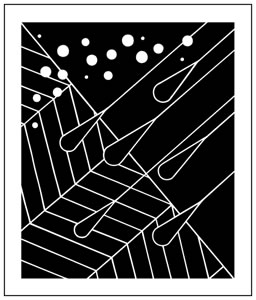4.3 Billion Years Ago
 ABOUT 4.3 BILLION YEARS AGO , the earth was cool enough for the water vapour in the atmosphere to condense into rain. What followed must have been the greatest rainstorm in the history of the planet, eventually covering most of the earth’s surface in water.
ABOUT 4.3 BILLION YEARS AGO , the earth was cool enough for the water vapour in the atmosphere to condense into rain. What followed must have been the greatest rainstorm in the history of the planet, eventually covering most of the earth’s surface in water.
With the presence of water, one of the most important requirements for life as we know it was in place. Life on earth probably began about 800 million years later and that will be the subject of the next station.
Eventually, about 4.3 billion years ago, the earth was cool enough for the water vapour in the atmosphere to condense into rain. What followed was the greatest rainstorm on earth, eventually covering most of the earth’s surface in water.
At the other end of the scale, the heavier elements fell towards the centre, where a core of iron developed, leaving the lighter elements to float to the top. On the surface, a thin crust of solid lava formed, which frequently melted again and re-solidified. With this flux and reflux, more and more of the heavier elements dropped out of the surface rocks, slowly building up the continental land masses from the lighter material which remained at the surface, floating on the heavier magma.
Standing here beside the Blackwater River, it is interesting to reflect that much of the water flowing past may have been formed by the collision of hydrogen and oxygen atoms in space following the destruction of the first generation stars. Molecules of this water formed an important fraction of the accretion disc around our sun as the planets formed. Comets are surviving fragments of that disc, and are known to consist largely of ice.